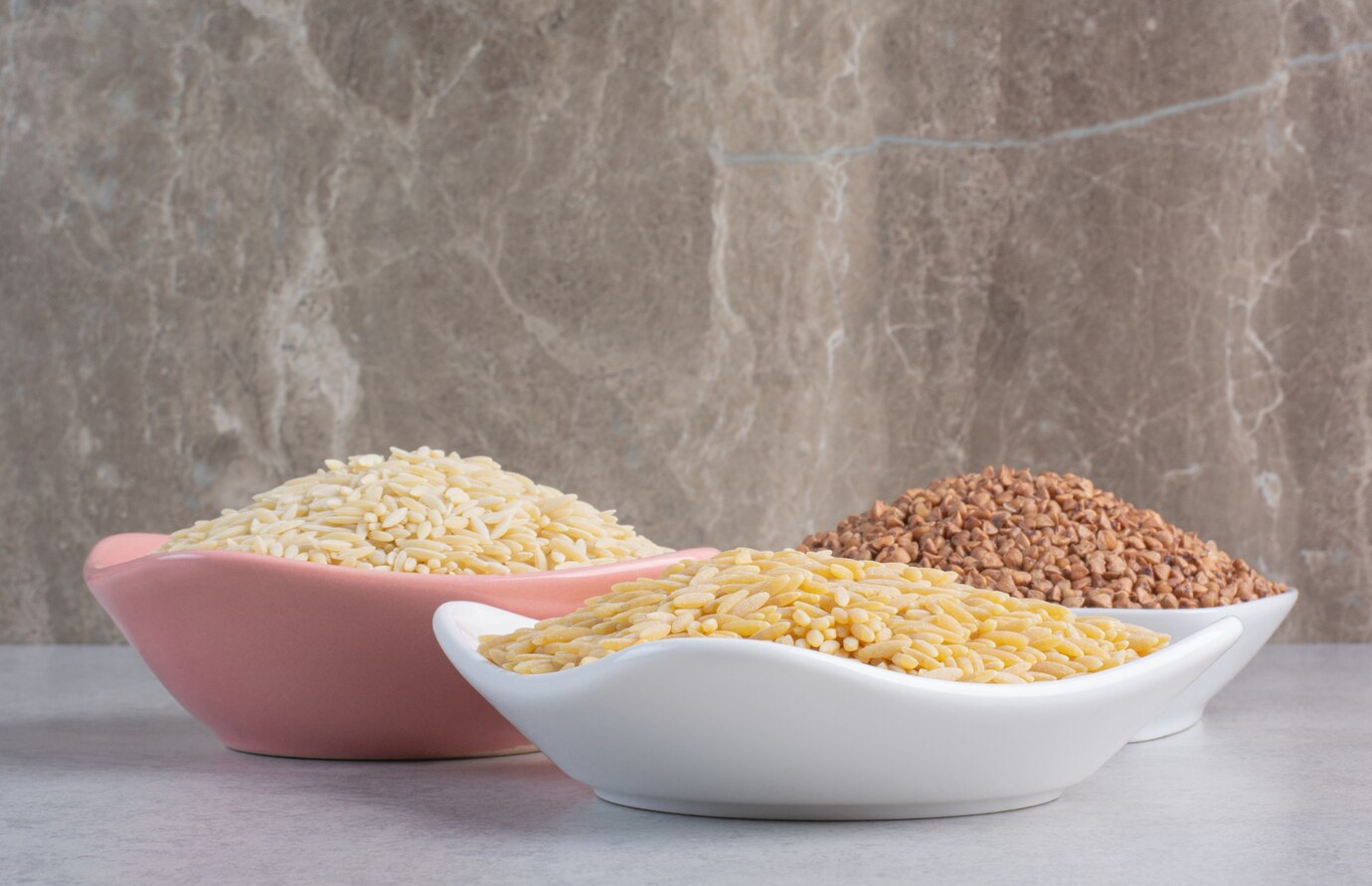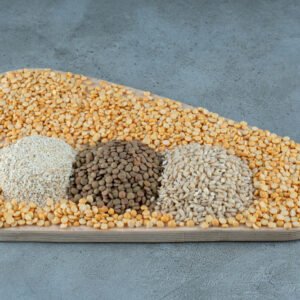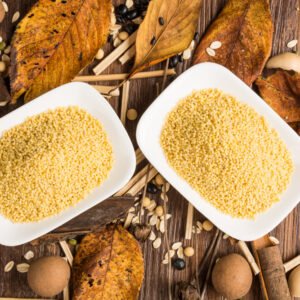Introduction to Brown Rice and Millets for Diabetes
When it comes to managing diabetes, choosing the right carbohydrates plays a pivotal role in stabilizing blood sugar levels, improving insulin sensitivity, and maintaining overall metabolic health. Among the growing list of healthy grains, brown rice and millets have become two of the most debated options. Both are known for their nutritional richness and low glycemic index compared to refined white rice. But which is truly better for people with diabetes?
Diabetes, affecting over 537 million people globally, requires careful dietary choices to manage blood sugar levels and prevent complications. Brown rice and millets (e.g., finger millet, pearl millet) are nutrient-rich, low-glycemic grains gaining popularity in diabetic diets. With the global superfood market projected to reach $250 billion by 2028, understanding Brown Rice vs. Millets for Diabetes is crucial for health-conscious consumers.
This blog compares brown rice and millets, analyzing their nutritional profiles, benefits for diabetes, and suitability for diabetic diets. Discover why CMS Industries’ premium grains are ideal for managing diabetes effectively.
What Are Brown Rice and Millets?
- Brown Rice: Whole-grain rice with only the outer husk removed, retaining the bran and germ. It’s rich in fiber, magnesium, and B vitamins, with a nutty flavor and chewy texture, used in pilafs, salads, and side dishes.
- Millets: Small, gluten-free grains like finger millet (ragi), pearl millet (bajra), and foxtail millet, packed with fiber, protein, and minerals. They’re used in rotis, porridges, and health drinks, offering diverse flavors.
CMS Industries sources brown rice and millets from trusted Indian farmers, ensuring purity and quality through rigorous testing. Our commitment to sustainable agriculture makes our grains a top choice for diabetic nutrition.
Why Compare Brown Rice and Millets for Diabetes?
Both brown rice and millets are recommended for diabetes due to their low to moderate glycemic indices, high fiber content, and nutrient density. However, differences in glycemic load, fiber levels, and mineral profiles affect their suitability for blood sugar control and overall health. Comparing them helps diabetics choose the best grain for their needs, from glycemic management to weight control. CMS Industries’ high-quality grains ensure you maximize these benefits in your diet.
Let’s dive into a detailed comparison of Brown Rice vs. Millets for Diabetes to determine which is better.
Nutritional Comparison: Brown Rice vs. Millets
To understand their impact on diabetes, let’s compare the nutritional profiles of brown rice and finger millet (ragi, a representative millet) per 100g (cooked, approximate values):
| Nutrient | Brown Rice | Finger Millet (Ragi) |
| Calories | 123 kcal | 119 kcal |
| Protein | 2.7g | 3.5g |
| Fiber | 1.6g | 2.7g |
| Carbohydrates | 25.6g | 23.7g |
| Fat | 1g | 0.5g |
| Magnesium | 39mg | 47mg |
| Iron | 0.6mg | 1.5mg |
| Calcium | 3mg | 13mg |
| Glycemic Index (GI) | 50-55 (Low) | 50-55 (Low) |
| Glycemic Load (GL) | 12-14 (Medium) | 8-10 (Low) |
| Antioxidants | Moderate | High (Polyphenols) |
Key Takeaways:
- Brown Rice: Lower fiber but higher carbs and glycemic load; moderate antioxidants.
- Millets (Ragi): Higher fiber, protein, iron, and calcium; lower glycemic load; richer antioxidants.
Benefits for Diabetes: Brown Rice vs. Millets
Both grains offer diabetes-friendly benefits, but their strengths differ:
Brown Rice Benefits for Diabetes
- Low GI for Blood Sugar Control: GI of 50-55 ensures slow glucose release, preventing spikes.
- Fiber for Insulin Sensitivity: 1.6g/100g fiber improves insulin response and digestion.
- Magnesium for Heart Health: 39mg/100g supports cardiovascular health, critical for diabetics.
- Sustained Energy: Complex carbs provide steady energy, reducing hunger-driven glucose fluctuations.
- Versatile and Familiar: Widely available, easy to incorporate into global cuisines.
Millets (Ragi) Benefits for Diabetes
- Lower Glycemic Load: GL of 8-10 minimizes blood sugar impact, ideal for tight control.
- Higher Fiber: 2.7g/100g enhances insulin sensitivity and reduces post-meal glucose spikes.
- Rich Antioxidants: Polyphenols reduce inflammation and oxidative stress, protecting against complications.
- Gluten-Free: Safe for diabetics with gluten intolerance, unlike wheat-based grains.
- Nutrient Density: High iron, calcium, and protein support overall diabetic health.
Our Premium Brown Rice and white rice are crafted to maximize these benefits, ensuring nutrient-dense options for diabetes management.
Brown Rice vs. Millets: Which Is Better for Diabetes?
The “better” choice depends on specific diabetic needs and lifestyle factors. Let’s compare them across key criteria:
- Blood Sugar Control
- Brown Rice: Low GI (50-55) but higher GL (12-14) may cause moderate glucose rises, requiring portion control.
- Millets (Ragi): Similar GI but lower GL (8-10) ensures minimal blood sugar impact, ideal for strict control.
- Winner: Millets, for their lower glycemic load and tighter glucose management.
- Fiber and Insulin Sensitivity
- Brown Rice: Moderate fiber (1.6g/100g) supports insulin response but less effectively than millets.
- Millets (Ragi): Higher fiber (2.7g/100g) enhances insulin sensitivity and slows glucose absorption.
- Winner: Millets, for superior fiber content and insulin benefits.
- Nutrient Density
- Brown Rice: Good magnesium and B vitamins but lower in iron and calcium.
- Millets (Ragi): Higher iron, calcium, and antioxidants, supporting anemia prevention and bone health.
- Winner: Millets, for their broader nutrient profile.
- Digestive Health
- Brown Rice: Moderate fiber aids digestion but may not prevent constipation as effectively.
- Millets (Ragi): Higher fiber promotes regular bowel movements, crucial for diabetic gut health.
- Winner: Millets, for enhanced digestive support.
- Gluten Sensitivity
- Brown Rice: Gluten-free, safe for celiac disease or gluten intolerance.
- Millets (Ragi): Also gluten-free, offering a nutrient-dense alternative.
- Winner: Tie, as both are gluten-free.
- Culinary Versatility
- Brown Rice: Familiar in global dishes like stir-fries, salads, and pilafs, easier for Western diets.
- Millets (Ragi): Versatile in rotis, porridges, and dosas, but less familiar outside Indian cuisine.
- Winner: Brown rice, for broader culinary acceptance.
- Sustainability
- Brown Rice: Requires more water and resources, less eco-friendly in arid regions.
- Millets (Ragi): Drought-resistant, needing minimal water and pesticides, highly sustainable.
- Winner: Millets, for their environmental benefits.
Overall Verdict: Millets (e.g., ragi) are generally better for diabetes due to their lower glycemic load, higher fiber, and nutrient density, making them ideal for blood sugar control and overall health. Brown rice is a good alternative for those prioritizing familiarity and versatility, provided portions are controlled. CMS Industries’ brown rice and millets ensure you can choose the best grain without compromising quality.
How to Incorporate Brown Rice and Millets into a Diabetic Diet
Both grains can be integrated into diabetic-friendly meals with careful preparation:
Brown Rice Recipes
- Vegetable Brown Rice Pilaf: Cook with low-GI vegetables and spices for a balanced meal.
- Brown Rice Salad: Mix with leafy greens, nuts, and olive oil for a fiber-rich lunch.
- Brown Rice Porridge: Prepare with unsweetened almond milk for a low-GI breakfast.
Millet (Ragi) Recipes
- Ragi Roti: Make flatbreads with ragi flour, paired with low-GI curries or lentils.
- Ragi Porridge: Cook with water or unsweetened milk, flavored with cinnamon for breakfast.
- Ragi Dosa: Blend with urad dal for crispy, nutrient-packed dosas.
Pro Tip: CMS Industries’ Premium Brown Rice and Ragi Flour are processed to retain nutrients, ensuring easy preparation and maximum benefits for diabetic diets.
Why Choose CMS Industries for Brown Rice and Millets?
As a trusted supplier, CMS Industries delivers quality and sustainability:
- Premium Quality: Our grains are tested for purity and nutrient content.
- Sustainable Sourcing: We support eco-friendly farming, minimizing environmental impact.
- Global Reach: Efficient supply chains deliver fresh grains worldwide.
- Customized Solutions: We offer whole grains, flours, and processed products for diabetic needs.
- Expert Support: Our team provides recipes and guidance for diabetes-friendly diets.
Brown Rice vs. Millets: Suitability for Diabetic Diets
- Tight Blood Sugar Control: Millets (ragi) for lower GL and higher fiber.
- Weight Management: Millets for greater satiety; brown rice with portion control.
- Gluten-Free Needs: Both are safe for celiac disease.
- Heart Health: Millets for antioxidants; brown rice for magnesium.
- Sustainability: Millets for eco-friendly cultivation.
Potential Side Effects and Precautions
Both grains are safe for diabetics, but consider these precautions:
- Brown Rice: Higher GL requires portion control (½-¾ cup cooked per meal); may cause bloating if over consumed.
- Millets (Ragi): High fiber may cause initial bloating; oxalates may affect kidney stone patients.
- Allergies: Rare, but test for sensitivities.
- Balanced Diet: Pair with low-GI foods for optimal glycemic control.
CMS Industries provides preparation guidelines to ensure safe consumption.
Tips for Choosing and Using Grains for Diabetes
- Choose Based on Needs: Millets for strict glycemic control; brown rice for versatility.
- Control Portions: Stick to ½-¾ cup cooked grains per meal.
- Pair Wisely: Combine with vegetables, lean proteins, and healthy fats.
- Buy Quality: Select CMS Industries’ grains for purity and nutrients.
- Monitor Blood Sugar: Test glucose response to adjust grain choices.
The Future of Brown Rice and Millets for Diabetes
Both grains are gaining traction:
- Functional Foods: Millets in low-GI snacks; brown rice in health cereals.
- Global Diets: Rising in diabetic and gluten-free markets.
- Sustainable Nutrition: Millets lead for eco-friendly cultivation.
- Research: Studies validate their roles in glycemic control.
CMS Industries promotes these grains through sustainable sourcing and innovation.
Conclusion
The debate between brown rice vs. millets for diabetes doesn’t have to be a strict either-or decision. While both are healthier than white rice, millets offer a clear nutritional edge, especially for individuals looking to aggressively manage blood sugar levels, improve gut health, and boost overall vitality.
Incorporating a variety of millets in rotation with occasional servings of brown rice offers balance, variety, and optimal diabetes control.
Frequently Asked Questions
- Are millets better than brown rice for diabetes?
Millets like ragi have lower glycemic load and higher fiber, ideal for blood sugar control. CMS Industries’ millets offer nutrient-dense options for diabetics, surpassing brown rice.
- How does brown rice help with diabetes?
Brown rice’s low GI and fiber stabilize blood sugar. CMS Industries’ brown rice supports diabetic diets with moderate portions, providing sustained energy and heart health benefits.
- Can diabetics eat millets daily?
Yes, millets like ragi are safe daily in moderation (50-100g). CMS Industries’ millets ensure low-GI, nutrient-rich grains for effective diabetes management and overall health.
- Why choose CMS Industries for diabetic grains?
CMS Industries offers sustainably sourced, high-quality brown rice and millets, tested for purity. Our grains support diabetic health, trusted globally for excellence and eco-friendly nutrition.
- What millet recipes are best for diabetics?
Ragi rotis, porridge, and dosas with low-GI ingredients are ideal. CMS Industries’ ragi flour inspires diabetes-friendly recipes, adding fiber and nutrients to balanced meals.





